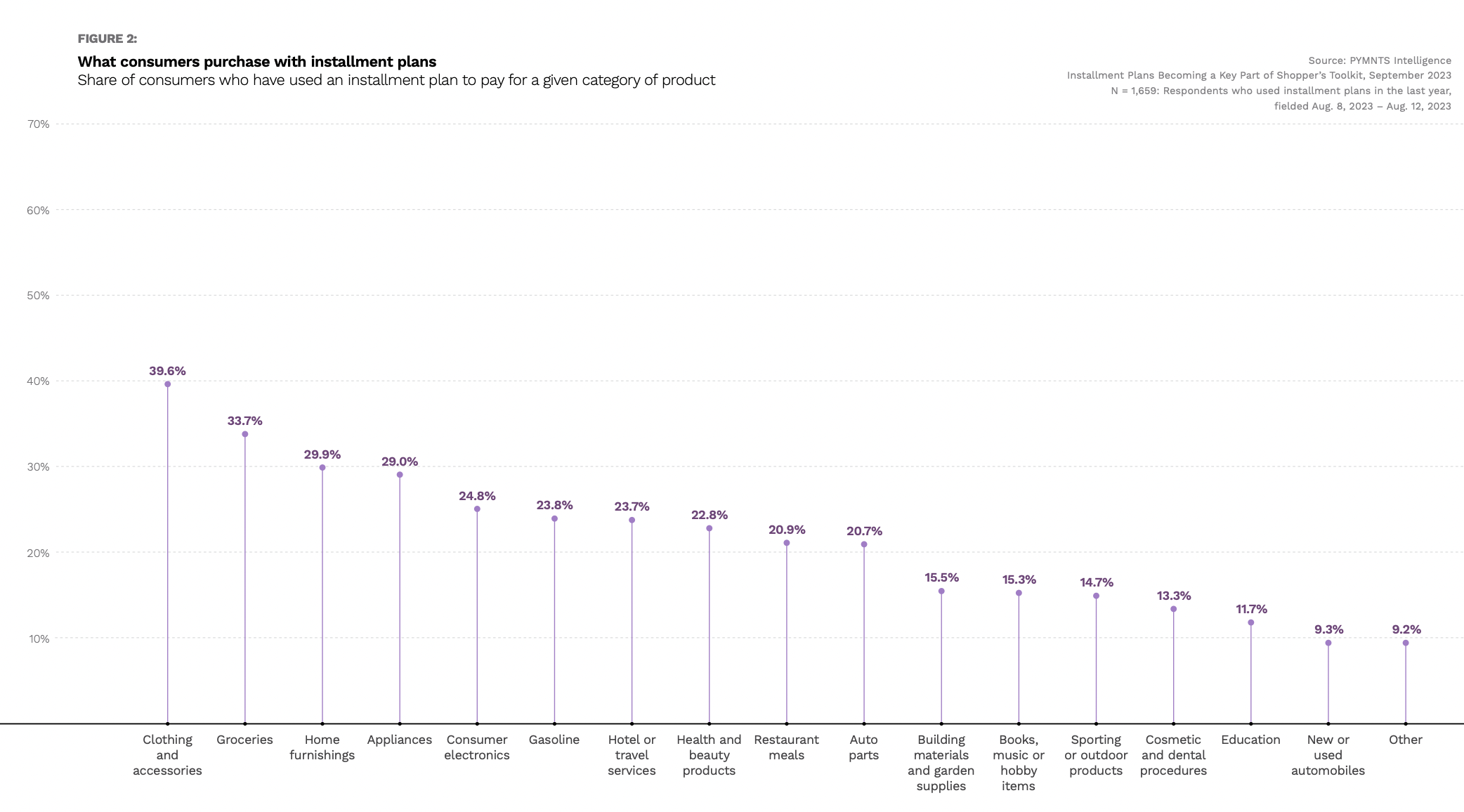
With consumers’ economic challenges continuing to limit their spending, many are turning to installment plans just to afford groceries, PYMNTS Intelligence reveals.
According to the study “Installment Plans Becoming a Key Part of Shopper’s Toolkit,” a PYMNTS Intelligence and Splitit collaboration, of the 60% of consumers who have used some type of installment payment plan in the past 12 months, 34% have done so to purchase groceries.
Certainly, consumers’ grocery budgets are under pressure right now, between cuts to the federal government’s Supplemental Nutrition Assistance Program (SNAP) benefits and the resumption of student loan repayments, among other financial challenges.
“The effects of sustained inflation, reduced government benefits including SNAP and higher interest rates have pressured customer spending, especially for those on a tight budget,” Kroger CEO Rodney McMullen told analysts on an earnings call earlier this month. “These customers are buying in smaller pack sizes, [at] times prioritizing the lowest shelf price, … building smaller baskets and switching to lower-priced items to stretch their budgets.”
It is not only grocers noticing consumers pulling back. Food brands are seeing the same.
“People are consuming less. Are they eating less? Are they wasting less? Are they eating more out of home? Difficult to know,” Nestlé EVP, Chief Financial Officer François-Xavier Roger said in a fireside chat Thursday (Sept. 28) for Bernstein’s Pan European Strategic Decisions Conference. “I don’t think that it will last but let’s not forget that we do operate in slightly declining markets by volume, which did not happen that much in the past.”
In the months ahead, as the holiday season approaches, further limiting consumers’ ability to afford their basic needs, it is likely that the choices consumers are forced to make at the grocery store will only become more difficult.
